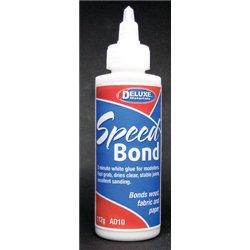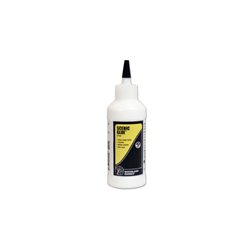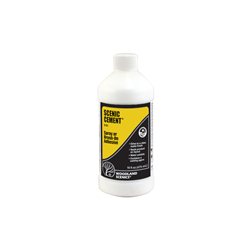OO is definitely easier for handling especially for those of us with larger hands and fingers, but otherwise there is...
No products
Product successfully added to your shopping cart
There are 0 items in your cart. There is 1 item in your cart.
Search Tips
Christmas and New Year
We are dispatching orders every weekday apart from Christmas Day, Boxing Day and New Year's Day.
If you order is time critical, select next day delivery at checkout.
The shop in Sandown is closed from 25th December, reopening on 30th December.
What is the most effective adhesive to use to secure grass and other similar scatter to a layout or diorama?
The most effective adhesive to secure grass and similar scatter materials to a layout or diorama is generally white PVA (polyvinyl acetate) glue. PVA glue is widely used for model making and offers several advantages:
Versatility: PVA glue is suitable for bonding various materials commonly used in model railways, including scatter materials like grass, flock, and static grass. It adheres well to most surfaces, such as wood, foam, and plaster.
Transparency: White PVA glue dries to a clear finish, which ensures that the adhesive doesn't interfere with the appearance of the scatter material. This is particularly important when creating realistic landscapes.
Flexibility: PVA glue remains somewhat flexible even after drying, allowing for some movement or adjustment of the scatter material if needed. It helps prevent breakage or detachment caused by minor handling or layout vibrations.
Water-based: PVA glue is water-based, making it easy to clean up and work with. It can be thinned with water for better flow or mixed with water-based paint to create custom-coloured adhesives. A good starting mixture is 50-50 water/PVA and adding a little washing-up liquid or methylated alcohol can also help by reducing surface tension, thus ensuring an easier flow for the solution.
When using PVA glue for securing scatter, it is advisable to apply a thin, even layer to the desired area using a brush or a small spatula. The scatter material can then be gently pressed into the adhesive, and any excess can be shaken off. It's important to allow sufficient drying time for the glue to fully set and bond the scatter to the surface.
Note: For more specialised applications, such as securing static grass with a static grass applicator, there may be specific adhesives available that are designed for that purpose. Always refer to the manufacturer's recommendations and instructions for optimal results.
Click here to receive the tips weekly in your mailbox. You can unsubscribe at any time.










